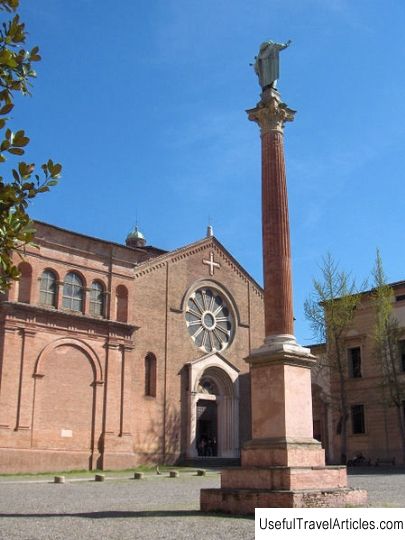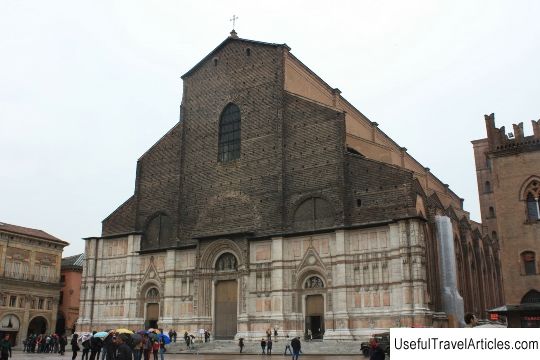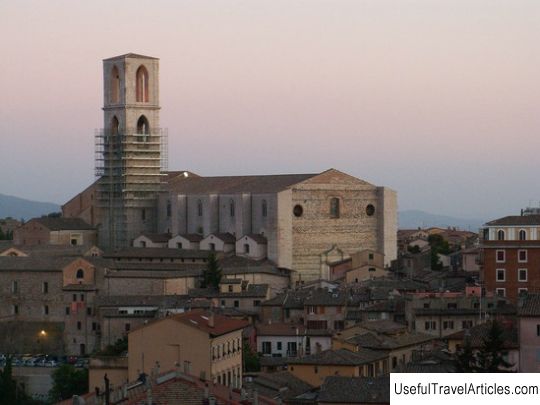Basilica di San Domenico description and photos - Italy: Bologna
Rating: 8,5/10 (766 votes) Basilica di San Domenico description and photos - Italy: Bologna. Detailed information about the attraction. Description, photographs and a map showing the nearest significant objects. The title in English is Basilica di San Domenico. Photo and descriptionBasilica of San Domenico is one of the main churches in Bologna. Here, inside an exquisite tomb by Nicola Pisano and Arnolfo di Cambio, the relics of Saint Dominic, the founder of the Dominican order, are kept. By the way, young Michelangelo also contributed to the creation of the saint's tomb. Dominic Guzman, who arrived in Bologna in January 1218, was struck by the vital energy of the city, and quickly realized that he could play a large role in his preaching mission. Soon, a monastery was founded at the Mascarella church, which, as it turned out, could not accommodate everyone who wanted to listen to the pilgrim's revelations, and in 1219 the brothers had to move to the small church of San Nicolo on the outskirts of Bologna. It was here that Saint Dominic died in August 1221 and was buried. His remains were placed in a simple marble sarcophagus in 1233, and later a magnificent tomb was built depicting events from the life of the saint. The work on the tomb lasted almost five centuries. From 1219 to 1243, members of the order bought all the land around the church of San Nicolo, and the church itself was significantly rebuilt after the death of the founder of the order. Between 1228 and 1240, a new monastic complex was built, the asp of the former church was destroyed, and the nave, on the contrary, was expanded. This is how the Basilica of San Domenico was born, which later became the model for many Dominican churches around the world. In 1251, Pope Innocent IV consecrated a new temple, and on this occasion, the crucifixion by Giunta Pisano was first shown to believers. Over the next few centuries, the church was rebuilt several times: in 1313 a bell tower was built in the Romano-Gothic style, in the 15th century new side chapels were added, the choir was moved behind the altar, and between 1728 and 1732 the interior of the church was completely renovated by the architect Carlo Francesco Dotti. Today, within the walls of the temple, you can see the works of the great masters of the past - Giunta and Nicola Pisano, Niccolo dell Arca, Jacopo da Bologna, Guido Reni, Filippo Lippi and Gercino. The square in front of the basilica is paved with cobblestones, as it was in the Middle Ages. In the center there is a brick column with a statue of St. Dominic, and behind there is a marble column with the "Madonna of the Rosary", erected here on the occasion of the end of the plague epidemic in the city. Behind the first column you can also see the graves of Rolandino de Passegeri and Egidio Foscarari, decorated with a Byzantine marble arch with a 9th century bas-relief. The Roman facade of the basilica, completed in 1240, was restored at the beginning of the 20th century. To the left of it stands the Chapel of Lodovico Gisilardi, built in 1530 in the Renaissance style. But the main chapel of the church is undoubtedly the chapel of St. Dominic, built by the Bologna architect Floriano Ambrosini. It is under its dome that the remains of the saint are kept. The marble bust by Carlo Pini (1946) depicts the actual appearance of Dominic - it was made on the basis of an accurate reconstruction of his skull. In the left side aisle you can see the old organ, which was played by the young Wolfgang Amadeus Mozart at the end of the 18th century. You should also pay attention to the luxurious chorale made in the 16th century in the Renaissance style. His unique wood inlays are considered the “eighth wonder of the world”. There is also a small museum in the basilica, which houses works of art and an extensive collection of valuable relics, chalice and monstrance. The monastery is also worth visiting - of particular interest are its covered arcades of the 14th, 15th and 16th centuries with their tombstones and memorial plaques on the walls. Here you can also see a 14th century fresco depicting St. Dominic - this is the oldest known image of a saint. On the first floor of the dormitory, tourists are shown his cell - it has been preserved unchanged since the 13th century, and, possibly, is the very cell in which St. Dominic died.                  We also recommend reading Castello Agolanti description and photos - Italy: Riccione Topic: Basilica di San Domenico description and photos - Italy: Bologna. |





